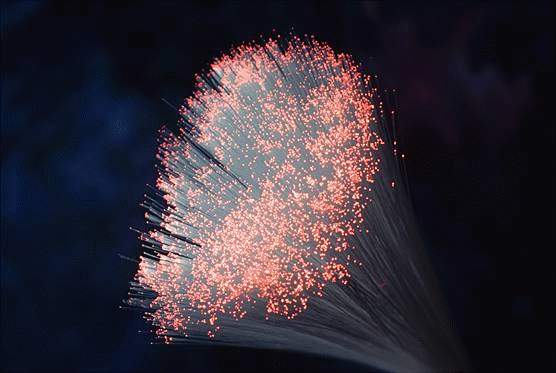 Total Internal Reflection in Optical Fibers
Total Internal Reflection in Optical Fibers
A phenomenon that happens when a propagating wave strikes a medium boundary at an angle larger than a particular critical angle with respect to the normal to the surface.
The critical angle is the angle of incidence above which the total internal reflectance occurs. Total internal reflection is the basic principle of a very useful branch of physics known as fiber optics.
As the angle of incidence increases so does the angle of refraction. When the angle of incidence reaches a value known as the critical angle the refracted rays travel along the surface of the medium or in other words are refracted to an angle of 90°. The critical angle for the angle of incidence in glass is 42°.
When the angle of incidence of the light ray leaving the glass is less than the critical angle, the light ray speeds up on leaving the glass and is refracted away from the normal. When the angle of incidence of the light ray is greater than the critical angle then no refraction takes place. Instead, all the light is reflected back into the denser material, the glass. This is called total internal reflection.